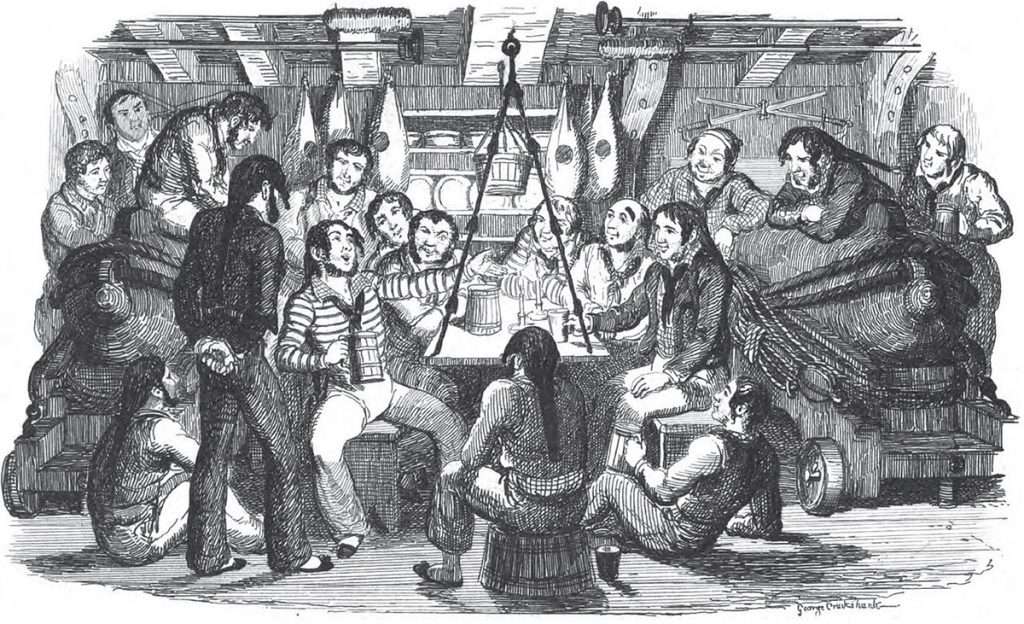What is Grog? A Story of Drunk British Sailors

I think it’s only fitting to do a post on the namesake of the blog, grog. You may have heard of the drink before, but the meaning has morphed across time and peoples. As with all good stories, this is one filled with politics, war, and necessity.
As far as we can tell, the word grog comes from the 17th century. Back then, the age of exploration spawned many sea voyages across the world. One issue with long-term expeditions back then is dealing with supplies, particularly water. After a few weeks, water would often become stale or grow algae. The next best option, beer, would also become sour while stored in wooden casks. Occasionally the crew would mix beer, wine, or brandy to make the water more palatable.
Around 1655 the British Navy, lead by Oliver Cromwell, went to the Caribbean to join France in its war with Spain. During this effort, British forces captured Jamaica. There were many ramifications of this action, but perhaps the biggest was the acquisition of rum (though I may be biased). As the wars interrupted the supply of wine and brandy from France and Spain, rum made its way into the sailor’s provisions.
Fast forward a hundred years or so to the 1740s and Vice Admiral Edward, nicknamed “Old Grog” arrived on the scene. He noticed sailors tended to run through rum supplies pretty quickly, leading to some, uh, behavior issues. One of his decrees was that all rum rations must be mixed with water to increase its longevity:
“The daily allowance of half a pint a man is to be mixed with a quart of water, to be mixed in one Scuttled Butt kept for that purpose, and to be done upon Deck, and in the presence of the Lieutenant of the Watch, who is to see that the men are not defrauded of their allowance of rum; it is to be served in two servings, one in the morning and the other in the afternoon. The men that are good Husbands may from the savings of their Salt Provisions and Bread, purchase Sugar and Limes to make the water more palatable to them.”
This order took effect on August 21, 1740, with the precise mixture being two quarts of water with one pint of rum. This concoction was fittingly called “grog.” Add some citrus to it, and now you’ve just solved another problem for sailors, scurvy. This practice of serving grog as sailor rations continued all the way to 1970.
Though the story of grog and drunk British sailors is an interesting one, it’s not exactly where the name of the blog came from.
A while back, I went to the Jameson distillery in Dublin with a group of friends. During the tour, the guide mentioned that in the early days of the distillery, workers would get a whiskey pour after their shift, which was called “the daily grog.” This name stuck with me. Between these stories, I’m reminded of how alcohol is intimately coupled with storytelling across human history.
Try it for yourself!
Navy Grog (courtesy of distiller.com)
– 1 oz light rum
– 1 oz dark rum
– 1 oz 151-proof rum
– 2 oz fresh orange juice
– 1 oz pineapple juice
– Slice of orange and maraschino cherry for garnish
